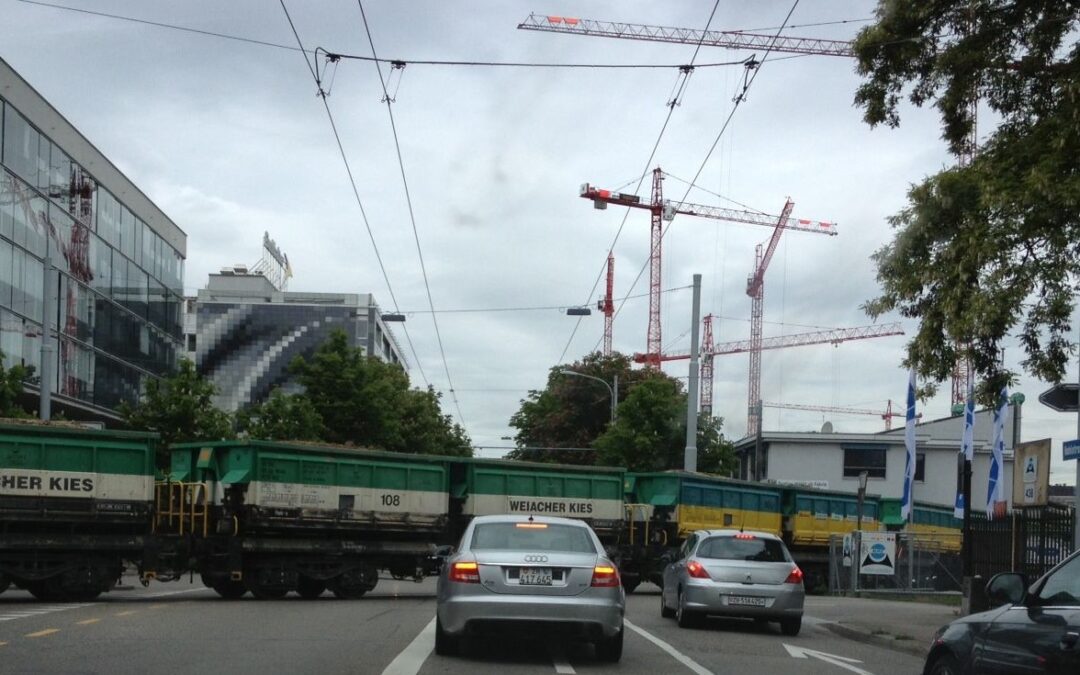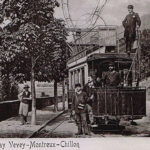In addition to the federal government, the cantons and large Swiss cities are also increasingly defining holistic freight transport concepts for their efficient, safe and environmentally friendly supply and disposal of goods. The freight transport industry is striving to work in partnership with the cantons and cities in order to join forces and further develop logistics locations. City logistics within cities and conurbations is becoming increasingly important. We at the VAP consider the following measures to be necessary so that the strengths of rail freight transport can be brought to bear in combined and multimodal transport.
1. Infrastructure development
- Dedicated investments in line extensions for freight transport are necessary for long-term competitiveness. It is imperative that these be included in the work for the next STEP expansion stage 2040/45, namely:
- Planning and implementation of the Zurich freight bypass line for additional capacity and unbundling of passenger and freight traffic, including elimination of bottlenecks in the nodes between Aarau and Winterthur.
- Examination of the complete unbundling of freight and passenger traffic in the Basel, Geneva and Zurich-Winterthur area as well as the Lausanne junction.
- The Swiss road network is in urgent need of modernisation. The measures adopted by the Federal Council and Parliament within the framework of the new National Roads and Agglomeration Transport Fund (NAF) and the strategic development programme STEP National Roads must be implemented as quickly as possible. There is a need for both renovations and the elimination of bottlenecks and capacity expansions on the most congested stretches.
- The coordination of the superordinate and subordinate road network must become the focus of attention. This means that more resources in the cities and agglomerations must be used directly for the specific needs of city logistics than is the case in agglomeration programmes 1 and 2.
- For comodal solutions in import/export, the transhipment capacities in Ticino must be significantly increased. To this end, existing terminals should be expanded and additional new locations near the border should be evaluated.
- Logistics locations must be taken into account in spatial planning and made more accessible: This includes access by road (national, cantonal, municipal roads), access by rail (network capacity to the (receiving) station) and shunting capacity for access to the siding from the (receiving) station. The latter is currently not legally secured. Regional network plans would be decisive for this.
2. Regulatory framework for the road
- The current road regulations should be retained in their entirety. The HVF, the ban on night and Sunday driving for HGVs, the 40-tonne weight limit and the ban on cabotage are undisputed in the transport industry and ensure fair social and competitive conditions.
- The cabotage ban in particular is central. Any relaxation of the current regulations would threaten the existence of the entire Swiss transport industry on rail and road. In addition, fatal consequences for the environment and modal shift policy would have to be reckoned with. In the current process on the possible conclusion of an institutional agreement, the ban on cabotage must therefore not be tampered with. It must remain anchored in the existing land transport agreement in its current form.
- As a financial incentive for multimodal transport, the HVF reimbursement in combined transport on the initial or final road leg should be additionally increased and now also granted for the combination of road and rail in wagonload transport with goods instead of container transhipment.
- The (road) transport industry abroad works with completely different cost structures than Swiss transport companies. The biggest differences are in the remuneration of drivers. The result is so-called “social dumping”, which massively distorts competition in the highest-volume freight transport markets in Europe. In addition, there is a need for tighter controls on the existing cabotage ban, including massively higher fines in the event of infringements.
3. Regulatory framework conditions for the railways
- In order to use infrastructures for passenger and goods trains as efficiently as possible, network utilisation concepts should be further developed in line with demand. In this way, expensive investments in infrastructure can be avoided and nodes can be effectively relieved. The freight transport industry is prepared to dynamise demand, for example in north-south traffic, thanks to hourly or daily planning. In return, the freight transport companies demand a discussion regarding the use of train paths by freight and regional trains at off-peak times early in the morning and late in the evening.
- Maintenance concepts of the infrastructure managers must take more account of the needs of freight traffic at night. The compensation introduced for line closures due to construction sites is useful as compensation, but ultimately the loading industry needs more reliability in the freight railways’ service provision. In future, maintenance work should therefore also be planned increasingly during the day and at weekends with uniform restrictions for all modes of transport.
- In order to strengthen the competitiveness of the railway in co-modal transport chains, the marginal costs of infrastructure use per train travelled must be redefined, taking into account the different demands of passenger and freight transport.
Entrepreneurial commitment
Freight railways, road hauliers and the shipping industry are aware of their responsibility for the supply of goods in Switzerland and have already implemented various measures in favour of co- or multimodal freight transport solutions.
- The partnership between SBB Cargo and Swiss Combi strengthens the shift from road to rail and sustainably increases capacity utilisation in system wagonload traffic and combined transport. The aim is to further increase the competitiveness of rail in the customers’ logistics chain and to use the modes of transport according to their strengths.
- SBB Cargo, the VAP VAP Swiss Rail Shippers Association and the Association of Public Transport VöV are developing a joint view of the range of services offered by the freight transport industry. Within the framework of the STEP 2030/35 expansion step, demands such as sufficient capacities, faster train paths and upgrading and new construction of freight transport facilities and stations were pushed through.
- Road freight transport is continuously increasing its efficiency through internal optimisations (e.g. planning, dispatching, digitalisation). The number of unproductive empty runs is at a very low level. However, a considerable part of the efficiency gains achieved is lost again due to productivity losses as a result of increasing congestion on the entire road network.
More dialogue for more sustainability and efficiency
Switzerland’s transport companies and shippers are committed to sustainable and efficient freight transport as a contribution to an ecological and competitive Switzerland. The modal shift from road to rail in transit traffic from border to border and a sensible (multi-) modal split should be further strengthened. The VAP and its partner organisations support a partnership-based, dynamic relationship between the authorities and industry players and are prepared to participate actively in the work.



